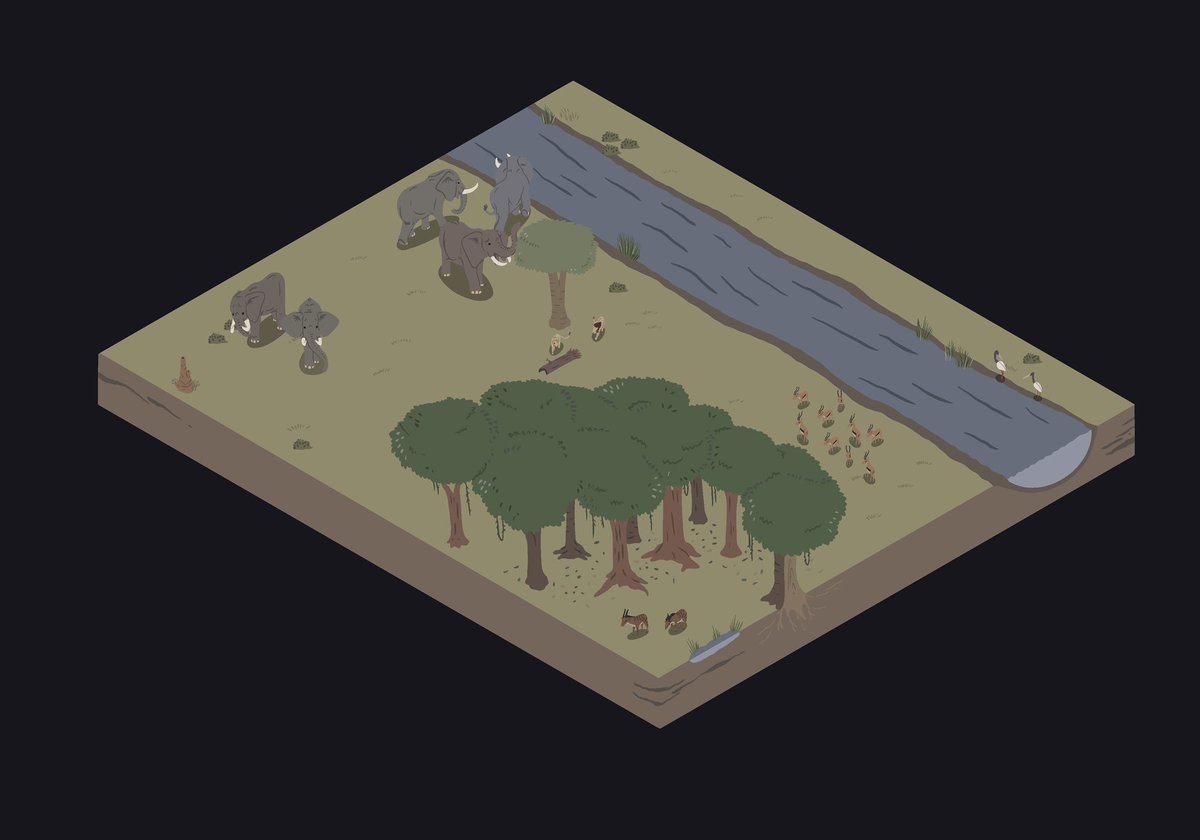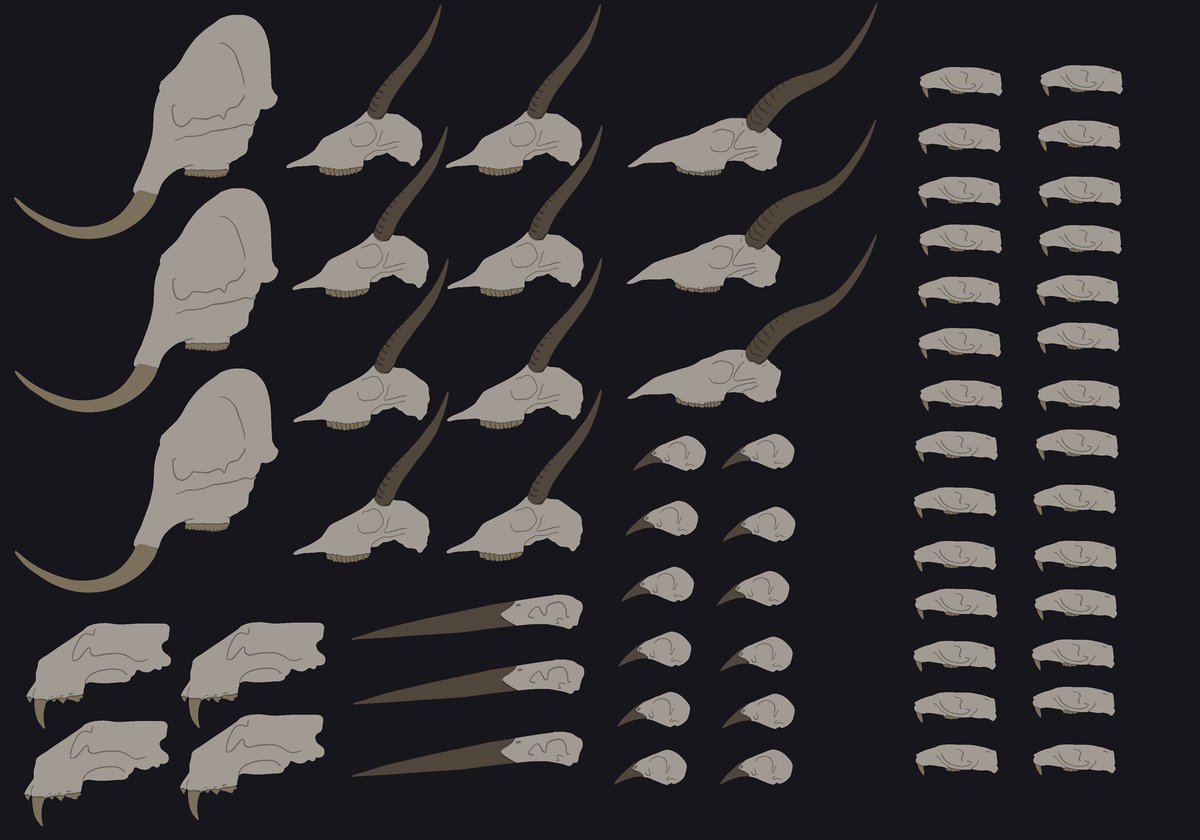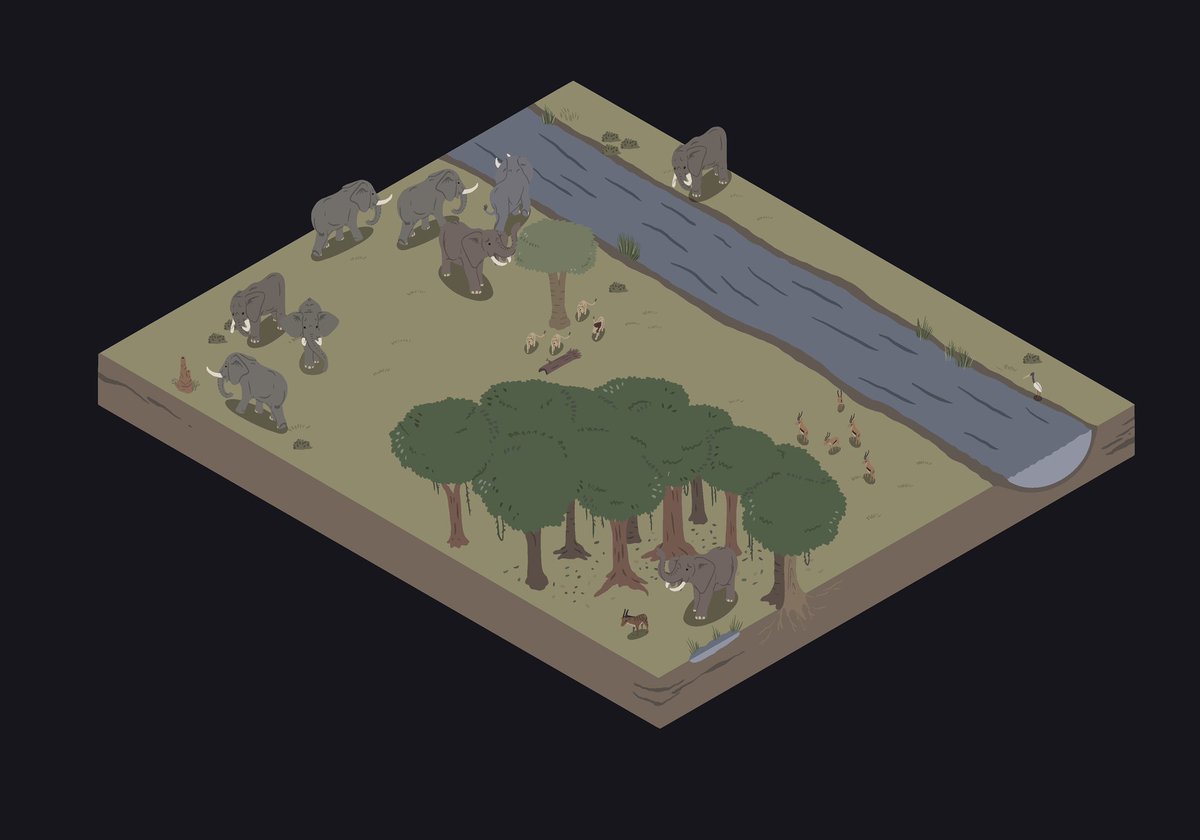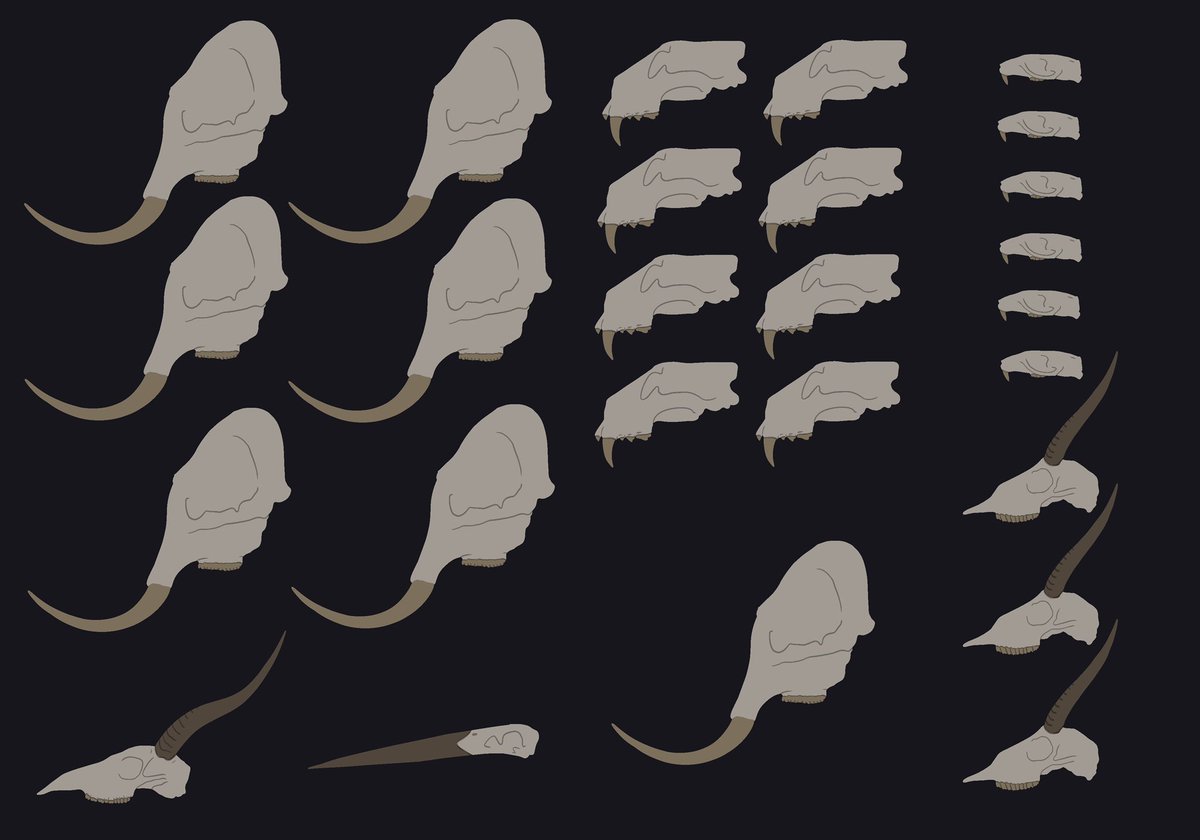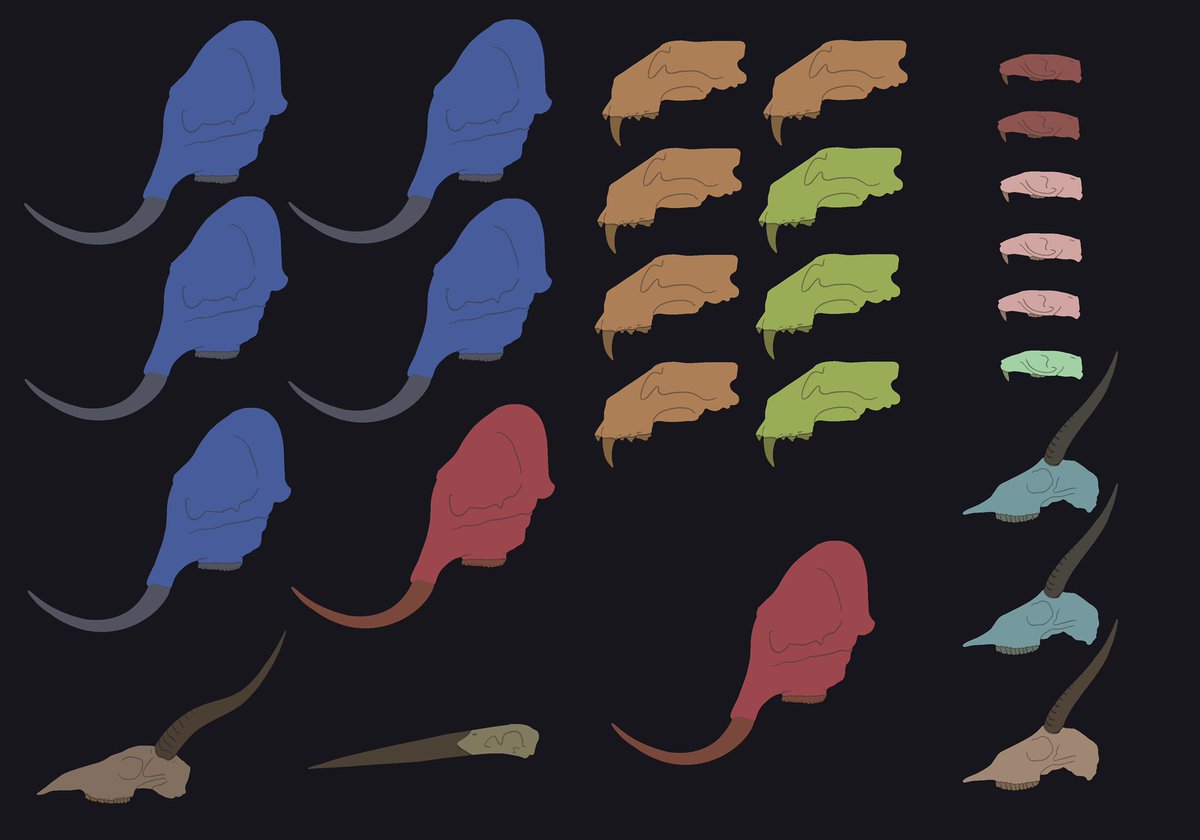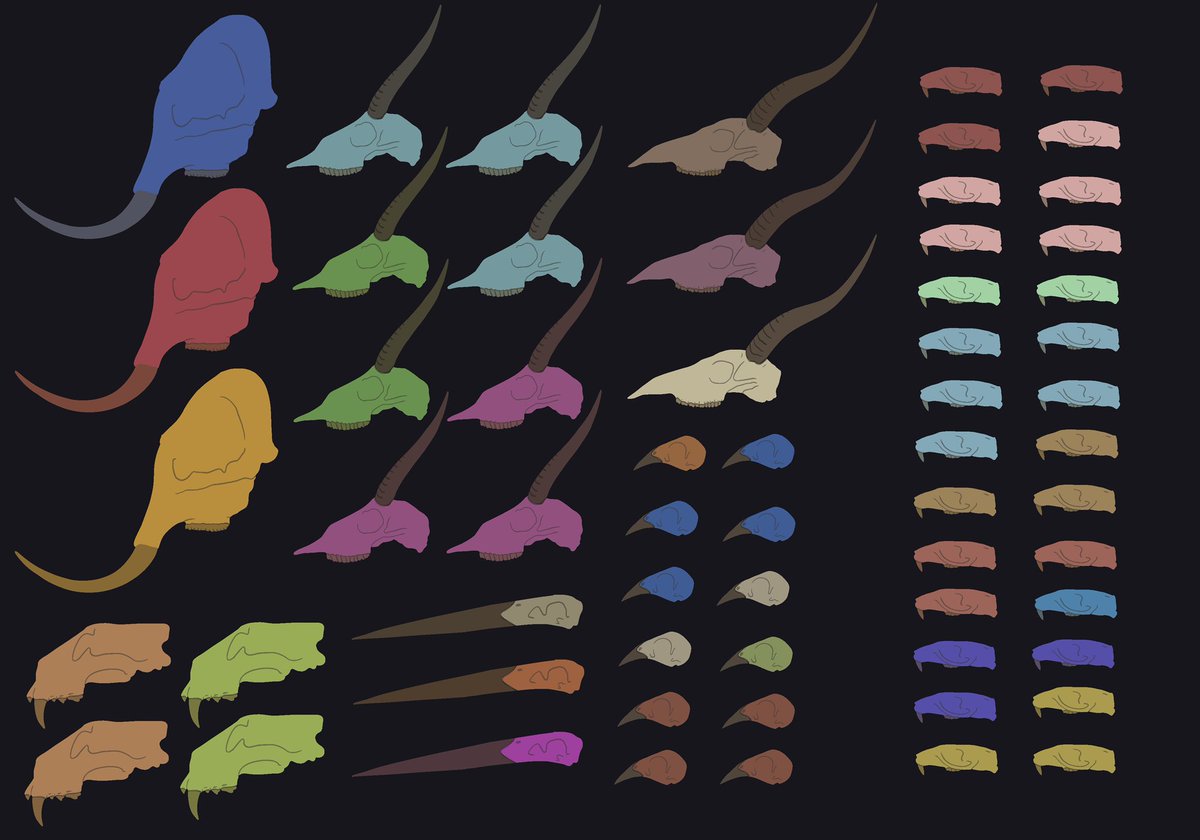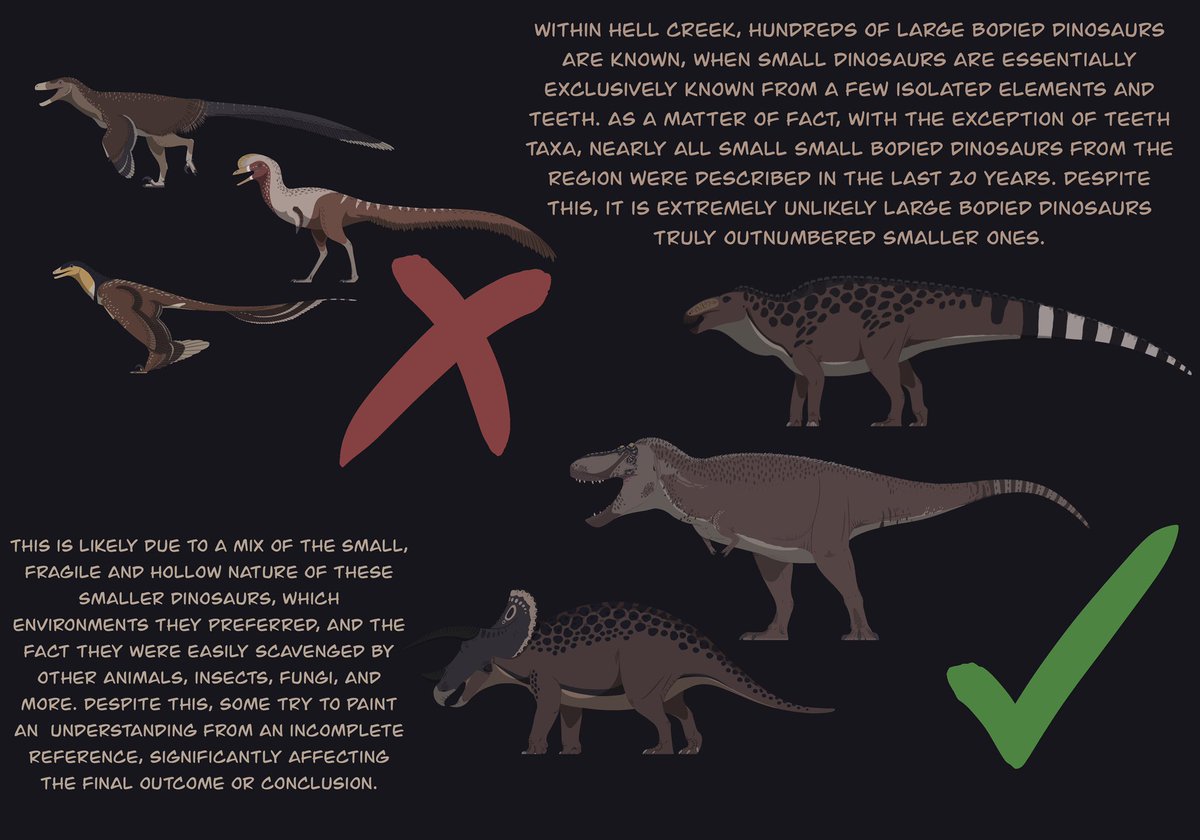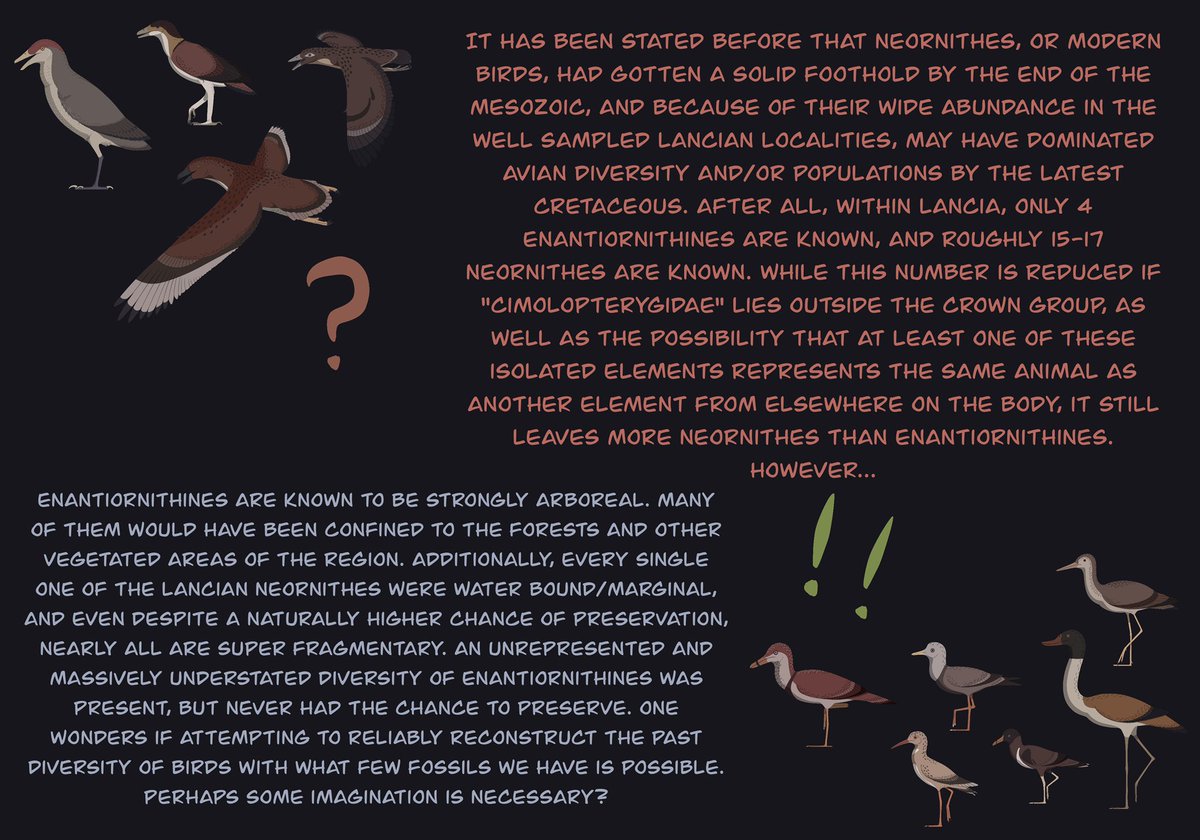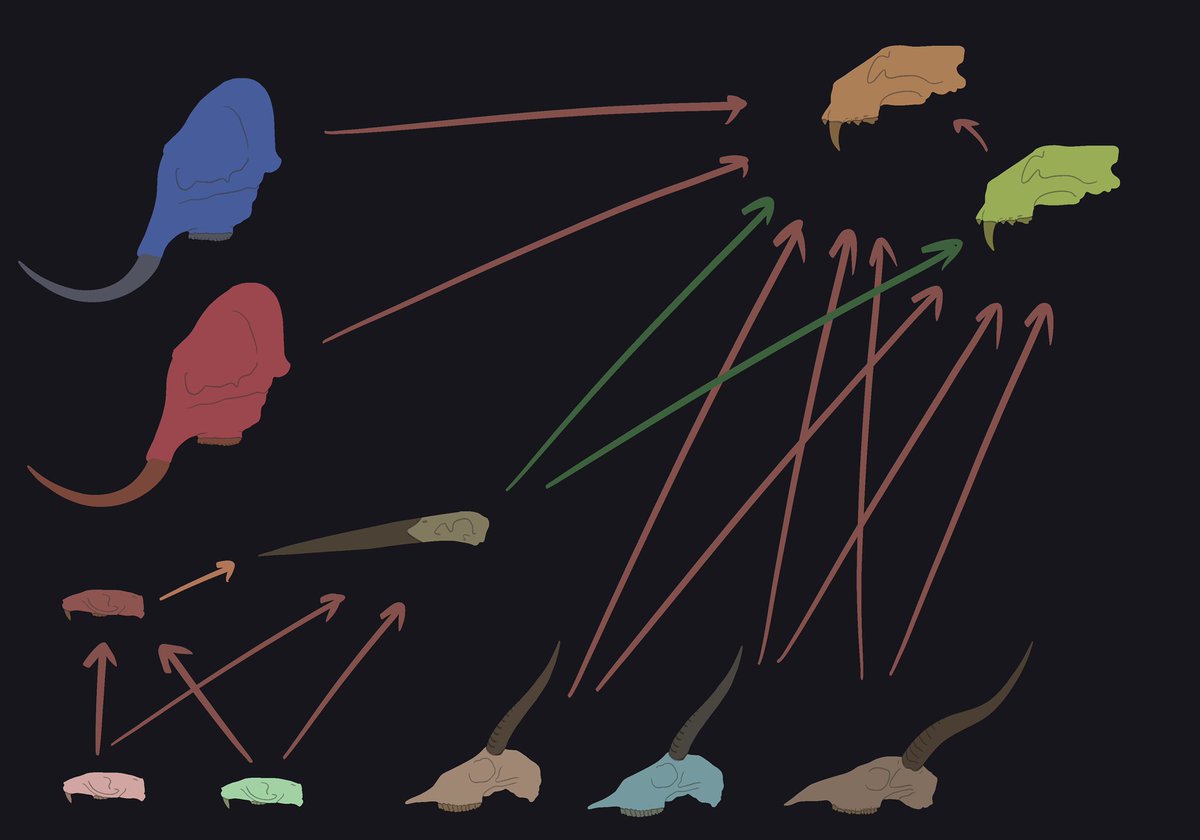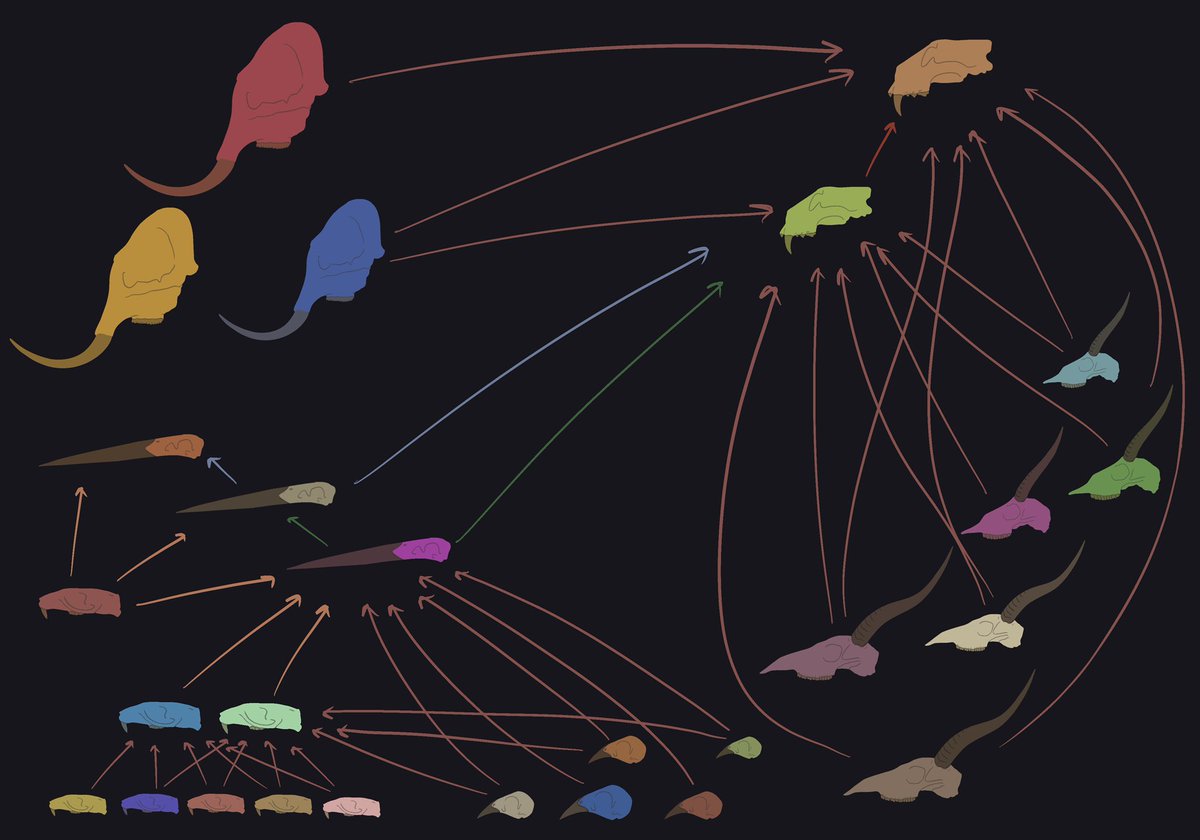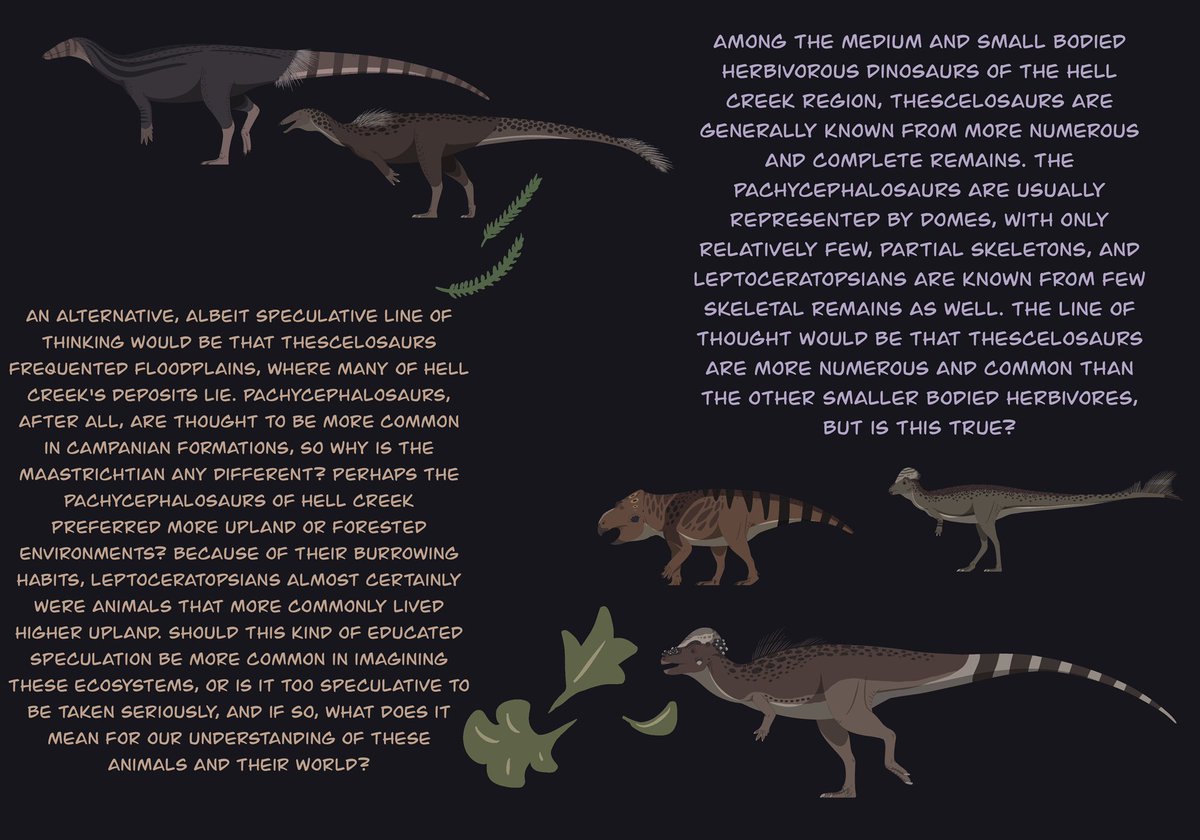A Beginner& #39;s Guide to Preservational Bias:
How limited information can create faulty conclusions, and things to consider when imagining Mesozoic ecosystems.
How limited information can create faulty conclusions, and things to consider when imagining Mesozoic ecosystems.
Note that not every Mesozoic formation is the same, and many factors make them sometimes only weakly comparable. However, some of the broad concepts still apply, and this thread merely serves as food for thought, and as a caution against assumptions about ecosystems of the past.
This hypothetical ecosystem includes large, small, and "rare" herbivores, predators, large and small birds, and small mammals. The skulls represent how many animals per unit of area there may be (there is no set number of animals per skull, it is merely a means of comparison).
1 million years pass, and the ecosystem begins to evolve or go extinct by natural forces. The environment they& #39;re in allows larger animals to preserve more easily. As a result, the perceived population looks something like this:
If taken at face value, one might interpret this data by stating that elephants dominated, with a substantial lion prescence, moderate numbers of small herbivores and small mammals, and birds and "rare" herbivores become even rarer. Now, this isn& #39;t truly an issue...
...until one begins to assume based off hard data. And, it& #39;s true, that& #39;s what science is. However, a limited data set creates conclusions that ultimately will be flawed. This incomplete picture the Achilles Heel of Paleontology. But let& #39;s take it a step further...
Now there are 2 elephants (Elephants A/B), 2 lions (A/B), 2 gazelle, one "rare" antelope, 1 large bird and 3 small mammals (A/B/C). This represents a well sampled formation, with a fair amount of recorded biodiversity.
How does it compare to the "true" population?
How does it compare to the "true" population?
Here we see a third elephant, more equal numbers between the two lions, and additional species of every other animal group. If this theoretical formation is so well sampled, where are all of these additional species?
For one, geological barriers, even within an otherwise well studied formation, prohibit some animals from being preserved. Perhaps the third elephant lived in or near mountains? Maybe why we find more of lion A because it lived closer to well watered areas than lion B?
Sometimes the way an animal is built disallows their preservation. Birds, for instance, have hollow bones, and many live in vegetated areas, so many places don& #39;t preserve any, and if they do, they& #39;re often water marginal species and/or fragmentary. Yet despite this...
...we are compelled to cast judgement that Mesozoic modern birds (neornithes) were nearly all water bound. Is this true? Very possibly. But, is it also true we have little information to work with and what we do have may be biased in some way? I think it& #39;s also possible.
Taking a look at our hypothetical ecosystem again, this is how we may reconstruct these animals interactions:
Nothing about this in inheritantly wrong, and given what we have, is a good start for understanding the interactions these animals may have had. However...
Nothing about this in inheritantly wrong, and given what we have, is a good start for understanding the interactions these animals may have had. However...
The actual food web is a little more complicated. The advent of missing steps, absent animals and incomplete data creates a partial picture, and while not wrong, still makes some jumps to fill the gaps.
But what does this mean for Mesozoic ecosystems?
But what does this mean for Mesozoic ecosystems?
It is no surprise that paleontology is a science of incomplete data. It& #39;s part of the deal. But it is easy to get a little carried away with conclusion making. It is sometimes said that because a formation is well studied and well sampled, that we have a good idea of...
..what the ecosystem was like. In comparison to other formations, this may be true, but this does not mean it is anywhere close to perfect. And without caution, an idea or conclusion can be used as the basis for another idea or conclusion, but...
..if the first conclusion was faulty, the second will be even moreso. Some formations may be exceptions, but the vast majority of formations suffer from one bias or another. Does this mean there is no hope in reconstructing these ecosystems as they may have been in life?
Far from it. We can still glean bits and pieces of information about these ecosystems, as ignoring what we have altogether is bad science. But there must be a little extra awareness and nuance of how much we& #39;re missing. Studies should serve as guides for how these ecosystems...
..may have operated, or serve to lead us to the next step in our understanding, but rarely if ever are they a truly accurate protrayal or interpretation of the animals and their world. It should be a give in, but a few forget this fact sometimes.
Even if someone were to undertake the monumental task of acquiring every specimen and collection within a certain time and locality, not just dinosaurs, and mapping out every possible ecological scenario, it would still be an incomplete picture hindered by biases.
Ultimately this should serve to highlight the need to continually sample certain key formations, no matter how well we think we may know them...
..as well as present the novel idea that sometimes, we should imagine these ecosystems not as fossils within formations, but as real, breathing animals in unset boundaries, and while hard data is a must-have, so is a little bit of educated imagination and speculation.
Just bear in mind that when certain complex theories end with, "or it may be a product of preservation bias," often
times, it is.
times, it is.

 Read on Twitter
Read on Twitter
